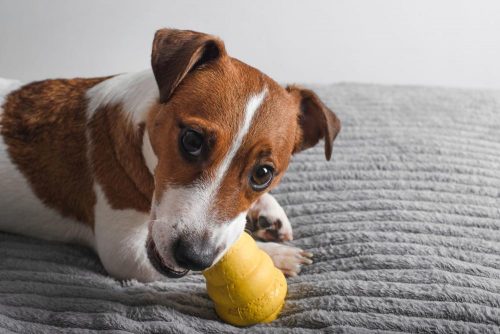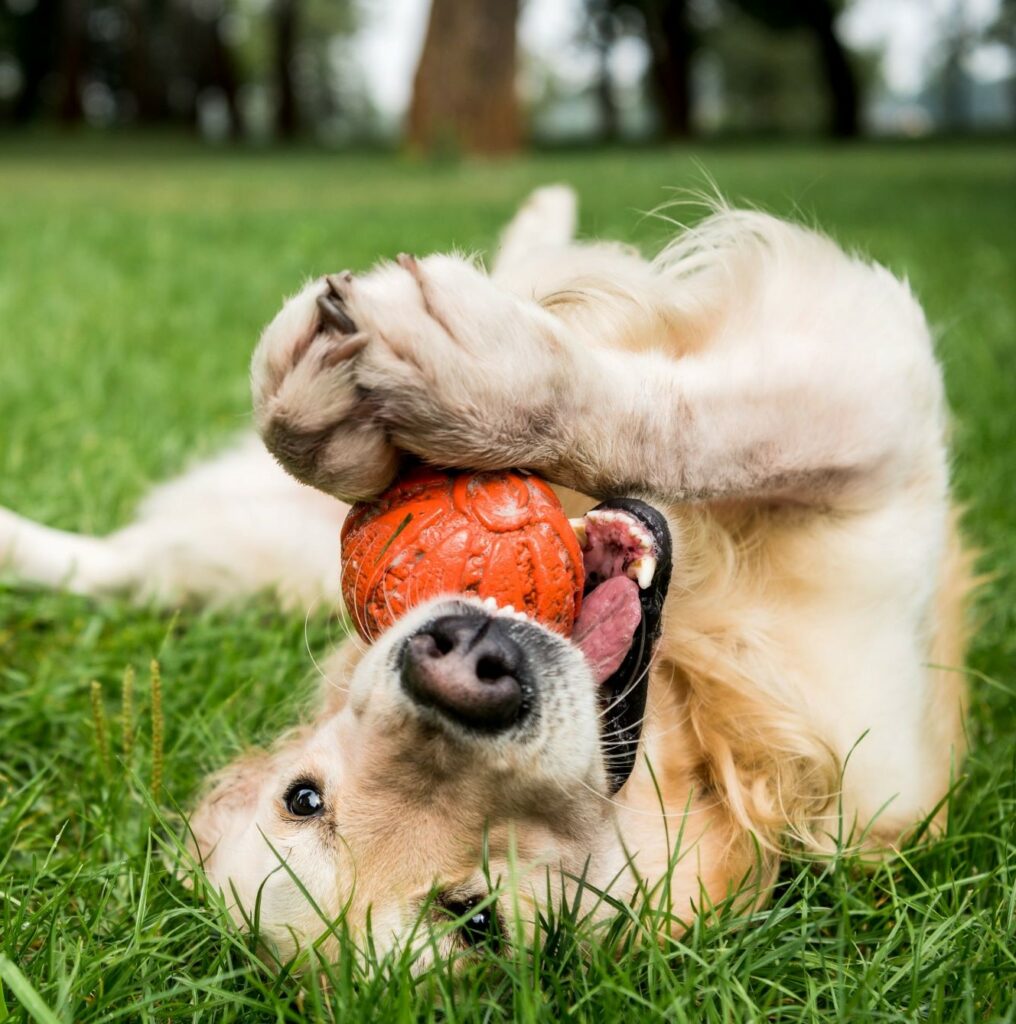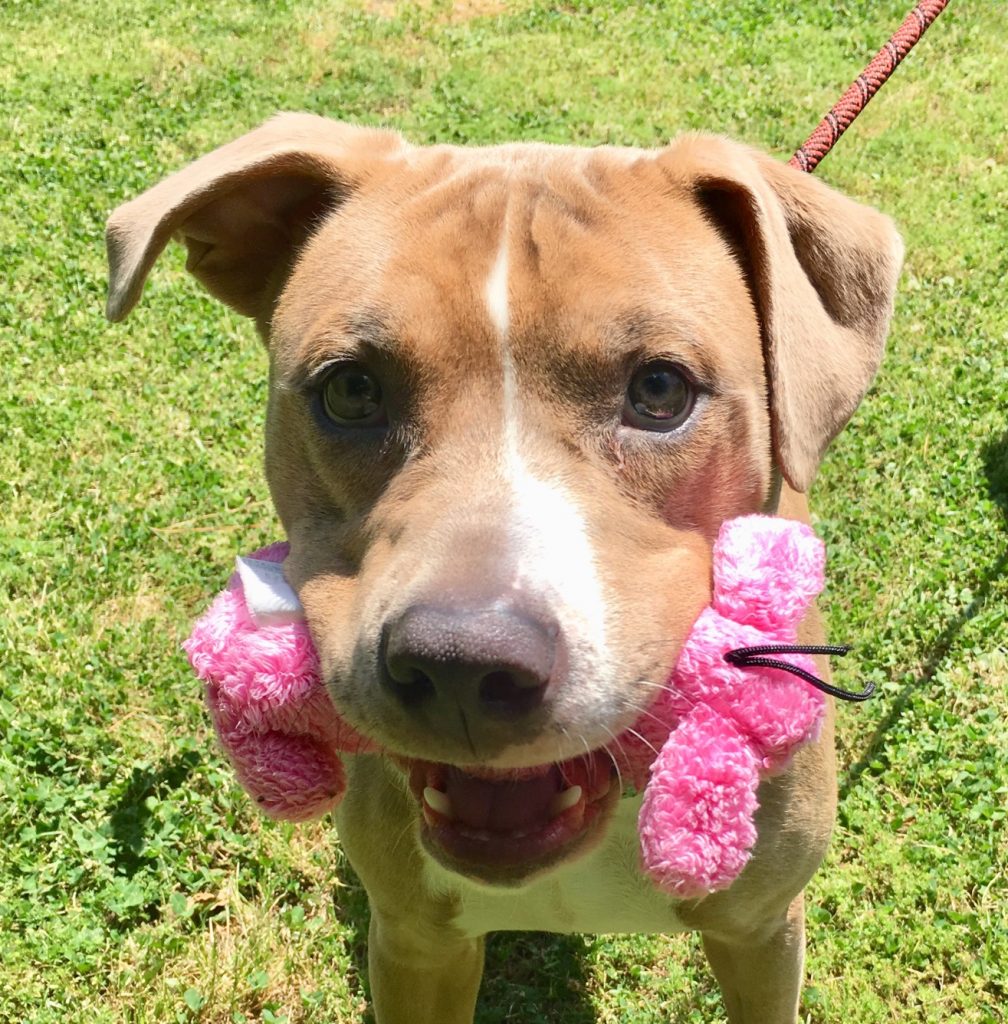 This article was featured in WYDaily on 8/5/22.
This article was featured in WYDaily on 8/5/22.
Those same big round eyes that made you melt and welcome them to your family can easily turn to panic when left alone, which might be separation anxiety in your dog or cat. The Heritage Humane Society shares signs and symptoms of separation and its best practices for helping keep your best friend calm that when they’re left alone (read: no more torn pillows or marking), it is okay and you’ll be back.

What is separation anxiety in pets?
Much like some human babies and toddlers go through anxiety resulting in crying, unsettledness, and even not wanting to let go when their parents head off to work, running errands, or out for entertainment, some dogs and cats go through the same feelings. This is called separation anxiety. Your pet doesn’t understand where you’ve gone or why you’ve left them and panic sets in.
“In owners and pets, separation anxiety is often spawned from a fear of the unknown or uncertainty about the future,” shares Andrew D. MacDougall, DVM, Riverbound Veterinary Clinic and Member of the Board of Directors of the Heritage Humane Society.

Symptoms of separation anxiety
Pets may display one or more of the following symptoms of separation anxiety.
Urinating and defecating. Some pets will urinate or defecate in inappropriate places when separated from their human companions. Cats may go outside of the litter box and dogs may relieve themselves in the house. If, however, cats or dogs have the same issues when their human companions are home, then separation anxiety likely is not the cause.
Barking and howling. Some dogs and cats express separation anxiety by being highly verbal when their human companion isn’t around. This adds to their distress and can cause frustrations with neighbors and anyone else within hearing distance.
Chewing, digging, destruction. It’s never fun to come home to a torn-up grass in the yard, pillow stuffing strewn about the living room, or chewed on furniture.
Escaping. Separation anxiety can be the culprit if your favorite feline or dog pal escape when you’re gone. The dog that bolts out of the dog door, jumps the fence and runs down the street following your car can be as frustrating to you as his fear that you’re leaving him.
Pacing. If you’re noticing a well-worn pattern on the floor or across the floor, that’s a sign your dog is whiling the time away from you by fixating on being separated and trying to cope with being unnerved.
Why is this happening?
You love your pet dearly, you’ve provided a safe, happy home, so you may find yourself wondering how come your pet is creating messes or wound tight. Separation anxiety is easy to diagnose. The tougher part can be finding the root cause.
Fear of losing you. Seldom do dogs and cats spend their whole lives with the same humans they may have been born around. Most pets are adopted and if it is not as a young puppy or kitten, the impression of losing a trusted guardian may be cemented in their memories.
Schedule change. Dogs and cats are classic examples of being creatures of habit. They love the dependability (read: no surprises) of routine. If a work schedule changes or a human companion goes on a trip, this can ramp up the pet’s anxiety.
Moving. A new home means new surroundings and the unfamiliarity can be very unnerving.
New family member. A new baby, roommate, or taking in other family members can be unnerving to pets as they try to adapt to new people having needs of you and new routines.
Treatment: calming the nerves
Separation anxiety definitely leaves pets feeling vulnerable. There are a variety of treatments spanning establishing routines to specialists to medication.
First, rule out underlying issues. Medical issues could be incontinence caused by medical problems or medications that may have a side effect of more frequent urination. Behavior problems can include submissive or excitement urination, incomplete house training, urine marking, juvenile destruction, boredom, barking or howling from environmental triggers such as unfamiliar sights and sounds.
“Establishing a daily routine and incorporating socialization will often take away uncertainty. When schedules are set in place the mind will stop overworking and trying to deal with uncertainty. You will then have a calmer and more confident dog,” says MacDougall.
Before leaving, be sure the dog or cat has had plenty of exercise and playtime. This decreases the energy they’ll have when it’s time for you to leave.
Treatment for mild anxiety. Counterconditioning works well with pets with mild anxiety by taking stressful situations such as you leaving the house and making it a welcomed positive experience for them. This can be done by providing high-value treats only when you’re leaving. For example, a Kong stuffed with peanut butter.
Treatment for moderate to high anxiety. If a pet’s anxiety is so high, they most likely won’t have an appetite so a stuffed Kong or a challenge toy filled with cat treats won’t be appealing or soothing. For these anxiety-ridden pets, a desensitizing and counterconditioning program is key. Since it is important that pets don’t experience fear within the program because that can cause a huge setback, enlisting the expertise of a Certified Applied Animal Behaviorist (CAAB/ACAAB), a board-certified veterinary behaviorist (Dip-ACVB), or a Certified Professional Dog Trainer (CPDT) qualified to help with separation anxiety is paramount.
Step 1. Predeparture cues. Putting on shoes and picking up keys can signal a pet you’re getting ready to leave, which in their minds means, “you’re leaving me.” Practice putting on shoes and hanging out at the house, picking up your keys and putting them in your pocket or moving them around the house so the pet hears the noise, but starts to realize it doesn’t mean you’re leaving them. This may take a few weeks. Once you see your pet is no longer anxious, you can proceed to the next step.
Step 2. Graduated departures and absences. Start by having your dog spend some time in another room in the house without you by instructing it to “stay.” This out-of-sight exercise starts with a couple of seconds and working up to 40 minutes, the threshold of from when pets using go from the most panic until they begin calming themselves. With daily practice, this can be accomplished over a few weeks.
Also, return to counterconditioning and build in a “safe toy” such as a peanut butter-stuffed KONG or a cat toy that requires the cat to interact with it to be rewarded with a treat from the toy so they associate a rewarding, relaxing activity with your absence. When it’s time to leave, practice a calm, quiet departure rather than being busy talking on your phone or with others while leaving your house.

“Separation anxiety is a vexing behavior issue. The protocol to address separation anxiety is methodical and meticulous. It takes a committed owner,” says Adam Claar, Dog Training Specialist at the Heritage Humane Society. “The support of a separation anxiety specialist can be expensive but invaluable. Owners may utilize medication to aid behavior modification.”
Scolding or punishing a pet is not only inappropriate, it can exacerbate their anxiety and distress. The pet is not trying to disobey, rather to convey to you they need help. Consult your veterinarian if you need help.
“Each case is unique and phobias are tough to get over,” shares Claar. “Time is a necessary ingredient in the recipe. The treatment may go slowly, but separation anxiety is treatable.”
Good dog training helps set the path for overcoming separation anxiety. Adam Claar provides the dog training classes and free workshops at the Heritage Humane Society. Those who adopt puppies or dogs from the Heritage Humane Society receive a special $40 off voucher for dog training classes.

To learn more and to register your dog for training, visit HeritageHumane.org or call 757-221-0150. Heritage Humane Society is located at 430 Waller Mill Road, Williamsburg, VA 23185.
Sponsored content by



